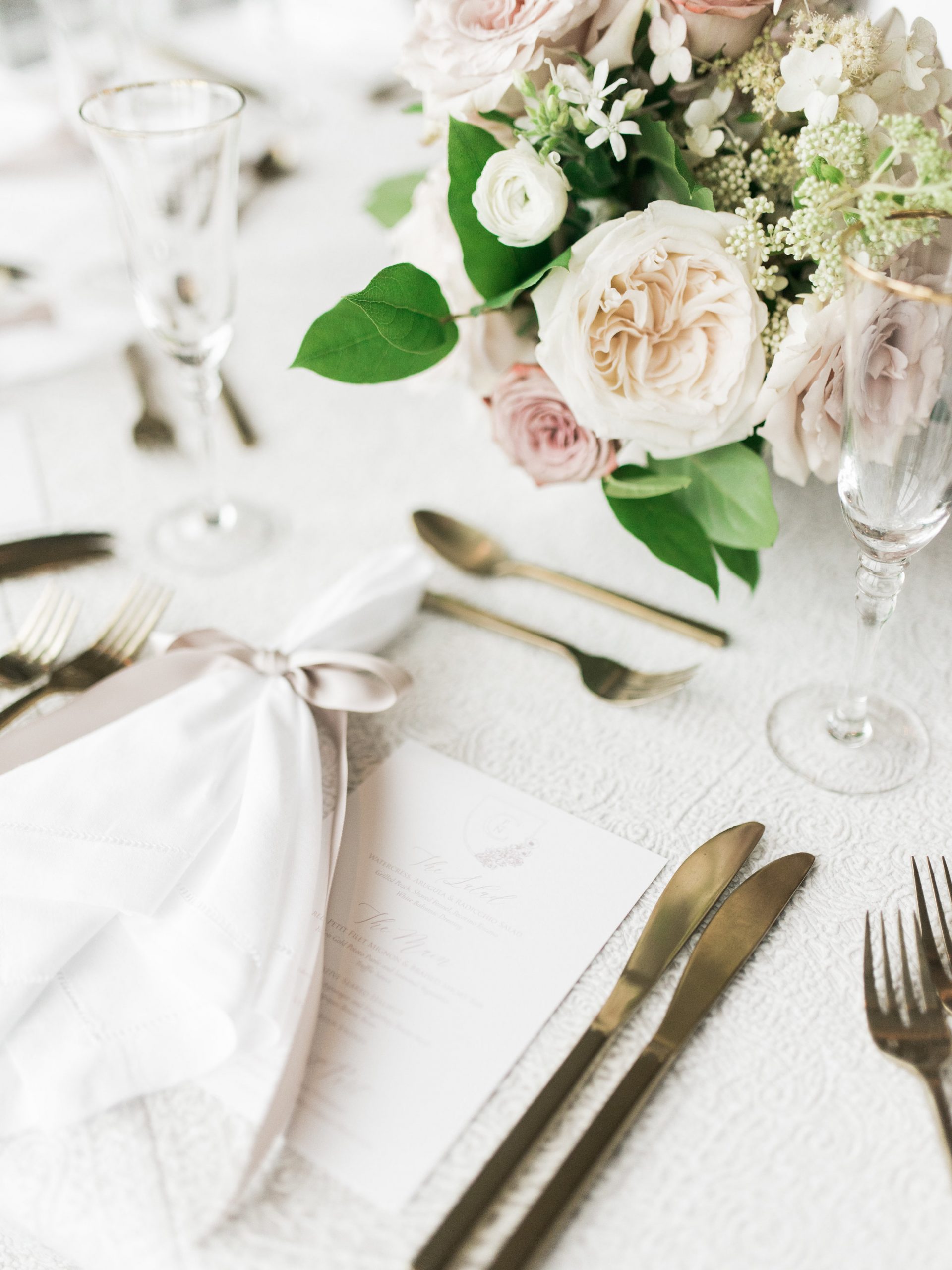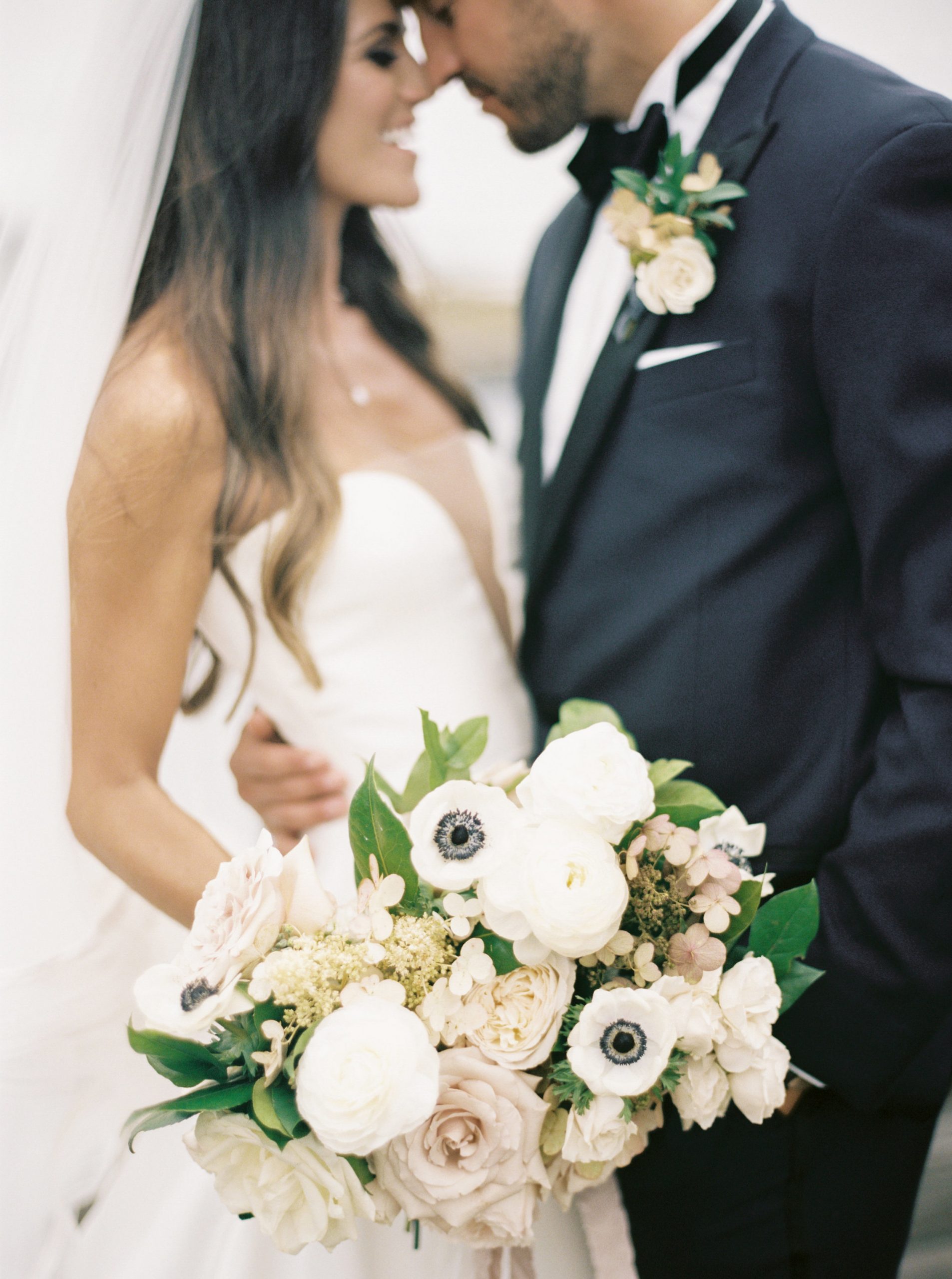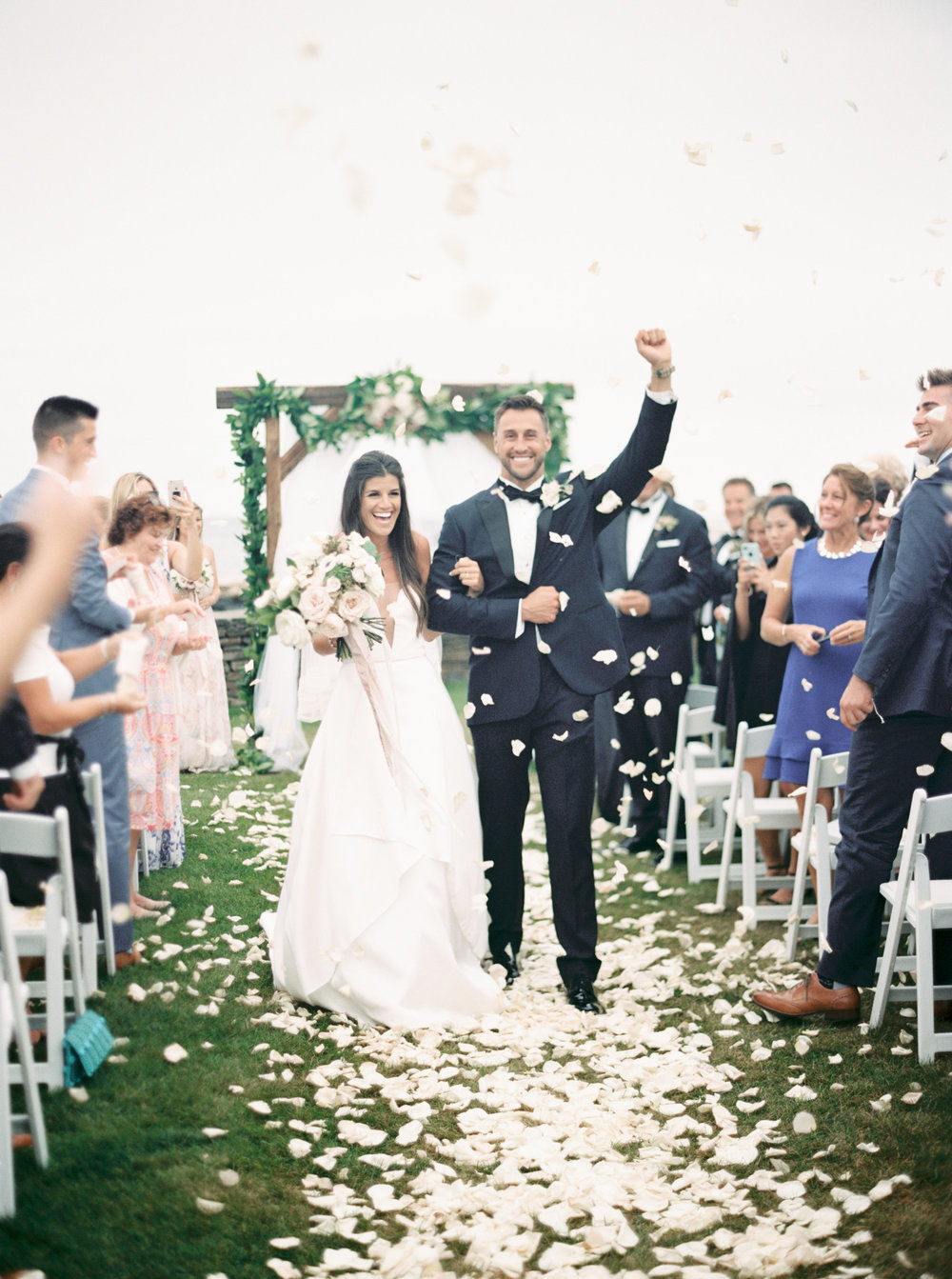A newly engaged couple begins to plan their wedding. They have a guest list as well as an idea of where and when they would like to be married. They aren’t completely sure how much their ideal wedding will cost or how to budget. They type “average cost of a wedding” into the Google search bar and land on this popular article entitled “The Average Cost of a Wedding in the US” featured on one of the country’s leading and prominent wedding blogs that states that the average cost for a wedding is $33,400. They continue to read other articles that state that same $33,400 as well. $33,400 is a large sum and it is an investment, and so it seems plausible to them to turn $33,400 into their wedding budget.
The bride begins to go through her gorgeous and idea filled Pinterest board and saved photos on her Instagram. She scrolls through vendor listings on wedding blogs, and from there begins reaching out to venues and vendors for initial estimates for 150 guests. The venue fees are $10,000. The catering estimates are ranging anywhere from $15,000-$25,000. The photographer the bride follows on Instagram comes in at $6000 for the total hours needed for the wedding. Sticker shock sets in. Once the shock wears off, they realize they are already almost reaching their initial budget and they have yet to even connect with a planner, band/DJ, floral designer, officiant, rental company, stationer, videographer, etc. Now the couple is second guessing their dream wedding because what they initially thought their total wedding budget would be has already been absorbed. They start believing the vendors are charging astronomical prices because compared to the “Average Cost of a Wedding” article, all of the vendors are two or three times the cost of what the article said they should be. The couple becomes exasperated. Within a short period of time, they have gone from over-the-moon excited to ready to pack their bags and elope.
^ Is this you? Does this sound similar to the experience you have had so far? If you answered “yes,” know that you are 100% not alone! In fact, this common chain of events happens to so many couples as they create a wedding budget — and I completely understand and can empathize with the frustration you and they feel. I can assure you that most vendors you are speaking with are pricing themselves fairly and accurately for the level of services and number of hours they devote to their clients. The real culprit creating this stress and frustration is the misinformation circulating the internet.
More and more I see this scenario when I chat with couples who inquire with me for wedding planning services. I can hear high levels of anxiety in couples’ voices when we discuss budget, and anxiety is NOT the primary emotion you should be feeling when you are planning what should be the most remarkable and joyful milestone. And so this winter when I received an overwhelming amount of requests for a blog post devoted to the actual cost of a wedding, I decided to put together this post and guide. My hope is that this guide will help demystify wedding budgets and give couples the knowledge they need create the perfect wedding budget for them and help them make their dream wedding a reality.
Photography by Elizabeth Laduca
THE AVERAGE BUDGET VS YOUR REALISTIC BUDGET:
Before we get started let’s quickly look closely at the $33,400 number I shared earlier, because it is important to know where this “average cost of a wedding” or average wedding budget comes from and how we should be cautious of using it as an universally realistic wedding budget. Here are the facts:
- This $33,400 was published by a prominent magazine and blog who polled couples who were married in 2017 in the USA.
- The couples polled were from all different regions, had different guest counts, different budgets, and were planning different styles of weddings.
- In total the magazine had 13,000 couples participate in their survey. That sounds like a lot of couples, right? Except that 1.1 million couples were married in 2017 in the US. That means that this average encompasses less than 1% of couples who were married that year.
- The majority of these couples who completed the survey were readers of the magazine— this means that $33,400 might be more indicative of the average budget of the avid readers of the magazine than it is indicative of the entire USA.
- Because of this magazine + blog’s prominence, the $33,400 gets published and reused by other publications. This average circulates and circulates as it is cited in many publications and articles, and before we know it this $33,400 is considered absolute truth and the nationwide average cost of a wedding.
And to be clear and fair, it’s not that this figure is wrong— there are so many wonderful weddings with a $33,400 budget or below, especially those gorgeous intimate weddings for a guest count under 50! But it’s important to point out that $33,400 is not usually the price tag of a 150+ person wedding with all professional vendors and a plethora of details, and it’s rarely the price of the weddings we see on Pinterest, Instagram, in magazines or on wedding blogs, which is where most couples find their wedding inspiration. The issue is that the “average cost of a wedding” figure lowers expectations of budget, while most couples’ visions, needs and desires put their budget well over this average cost. See why this can be so frustrating?
Knowing all of this, let’s set aside the notion of the “average cost of a wedding” and let’s instead focus our attention on creating a realistic wedding budget tailored to your own wedding!
WHAT DOES A WEDDING REALLY COST:
So what does a wedding really cost then? Within every single region and state (and even city!) the average cost of a wedding is different and varies greatly. But in reality, we will often see a wedding for 150 people at a venue with all professional vendors and a standard number of details ranging anywhere from $40,000-$60,000 depending on your region.
That said, those couples wishing to host a private estate/tented wedding, get married at a luxury venue (mansion, historical venue or luxury resort), or even incorporate more fine details and upgraded elements (letterpress stationery suites, custom monogram, specialty linens, floral chandeliers, etc), they will look to spend anywhere from $75,000-$175,000 for a 150 person wedding. And of course it does go upward from there for couples who are hosting an even more luxury wedding!
This is not to say that you cannot have a wedding that costs less — there are many beautiful celebrations at a lower price range. For the majority though, the wedding location, guest list size, the amount of services you need, the amount of food and beverage, the labor that goes into producing the wedding from professionals, the number of details and customizations, the number of upgraded rentals, etc. will require a budget that is at least $40,000-$60,000. And if you’re hosting your wedding along the coasts of the US (like Always Yours Events couples usually are), in cities or popular destinations you will usually find yourself at the top of this range and potentially going upwards from there.
 Photography by Elizabeth Laduca
Photography by Elizabeth Laduca
HOW TO PREPARE A REALISTIC WEDDING BUDGET:
With that said, the best way to prepare a realistic wedding budget is to know the typical cost of a wedding in your area/the chosen wedding location, determine if and where you need to adjust, and then allocate the appropriate percentage of your budget to each vendor. How do we do this? Follow these steps:
1. Speak to Reputable Vendors. Starting with a wedding planner in your area/the chosen wedding location is a GREAT start, especially where it’s part of a wedding planner’s job to know the the industry averages for your area and manage wedding budgets. A simple email to a wedding planner asking how much she or he sees couples spending on a wedding with your guest count in the area will help you set expectations. Most wedding planners are more than happy to share this information to help demystify the budget conversation, and you should have no trouble getting a response. If you are not planning on hiring a wedding planner, consider speaking with a venue coordinator or specialist at a venue you are interested in to learn more about the typical budget they see in the area. Essentially, speaking to professionals to gather the cost of a wedding in your actual area is beyond helpful and the most effective way to create a realistic budget.
2. Have the Budget Conversation. Once you have an idea of the typical budget needed in your location, sit down together and with all parties who are contributing to budget and customize. Do you want/need to increase at all to accommodate guest count or a vendor you are certain you want to book? Do you need to decrease at all? If you need to decrease, are there any compromises you are willing to make to lower the budget? This conversation is SO important to have, and while not the most exciting part of the planning process, it’s one of the most imperative.
3. Create a Budget for Each Vendor Category. When you have established the total budget you are working towards, go ahead and apply the following percentages for each vendor category to determine how much you should be allocating towards each vendor. The percentages below reflect how much of total budget couples are typically allocating per vendor category. Please note that some vendor categories have percentage ranges because this breakdown takes into consideration the fact that some vendors will be a priority over other vendors for couples (ie: you may opt to spend less on rentals and decor at a venue that includes the tables, chairs, linens, etc needed in their rental fee).
VENDOR CATEGORY PERCENTAGES:
Catering and Beverage: 30%
Venue (including ceremony space): 10%
Wedding Planner: 10-12%
Officiant: 1%
Photographer: 7-10%
Entertainment (including ceremony music): If Band: 7-10% or if DJ: 2-5%
Florist: 8-10%
Rentals and Decor: 7-10%
Video: 4-5%
Attire: 5%
Wedding Stationery: 3-5%
Hair and Makeup: 3-4%
Transportation: 2-3%
Cake/Dessert: 1-2%
The beauty and benefit of using percentages is that you can apply them to your actual budget and get scaled dollar amounts per vendor category. Because no two budgets are the same and since we want to create the perfect realistic budget for your wedding, you will want to work with percentages rather than average costs per vendor. With percentages you can easily see where you have room to reallocate funds from one vendor category to another as you prioritize what elements of the wedding you would like to spend more on. If you decide against booking a particular vendor category all together (say you do not need transportation), you can reallocate their percentage towards other vendors who you might need or want to spend more on.
The key is creating the right budget for you and for your dream wedding. Every wedding is unique and so budgets should be as well! And it is my hope that this post and guide helps you feel more in control of your wedding planning by helping you create a customized budget, as well as help to bring more joy to the wedding planning journey!
As a helpful tool to go hand in hand with this blog post, I have also created a free Wedding Budget Spreadsheet for your use! This spreadsheet includes a sample budget breakdown, as well it applies the percentages outlined above to each vendor category to get you started! Click here to have this budget spreadsheet sent directly to your inbox.
Happy planning, friends!
xo, Keri



